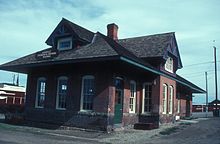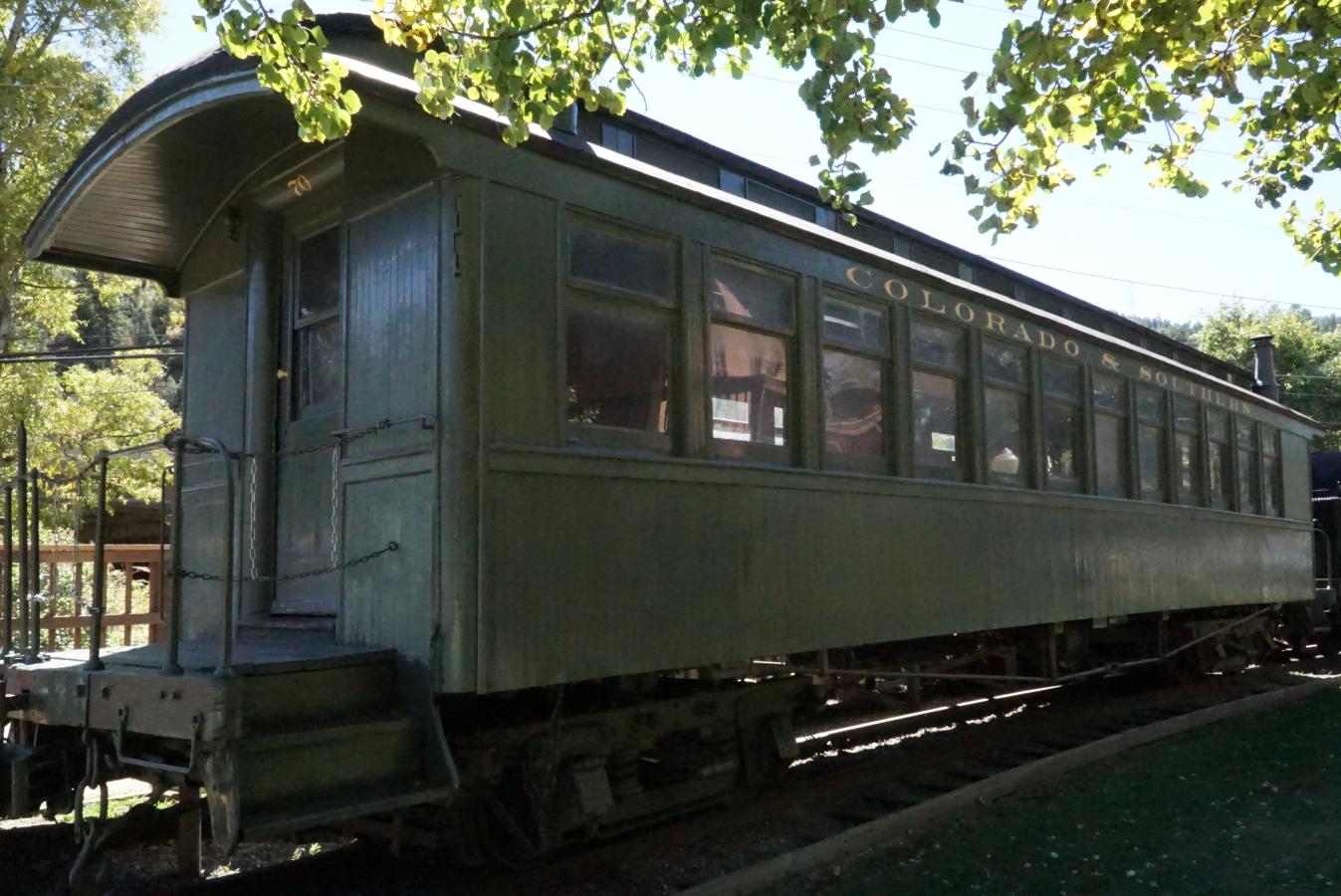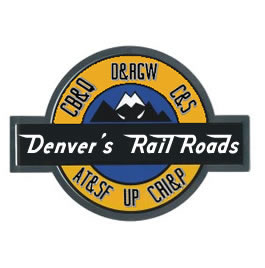Summary
The Colorado and Southern Railway Company was
chartered in Colorado on December 19, 1898, and operated in Wyoming,
Colorado, and New Mexico. The company was formed on January 11, 1899,
when the Colorado and Southern acquired the Union Pacific, Denver and
Gulf Railway Company and the Denver, Leadville and Gunnison Railway
Company, both formerly subsidiaries of the Union Pacific.
In Texas, the Colorado and Southern
controlled a rail system extending from Texline in Dallam County through
Fort Worth and Dallas to Houston and Galveston, in addition to branches
in the
Panhandle, in the South Plains, and to Abilene. The
Colorado and Southern system in Texas included ten railroads, of which
eight were owned by the end of 1910. The oldest was the Fort Worth and
Denver City Railway Company, which made direct connection with the
Colorado and Southern at Texline. Other owned companies included the
Wichita Valley Railroad Company, the Wichita Valley Railway Company, the
Abilene and Northern Railway Company, the Stamford and Northwestern
Railway Company, the Fort Worth and Denver Terminal Railway Company, the
Wichita Falls and Oklahoma Railway Company, and a 50 percent interest in
the Trinity and Brazos Valley Railway Company. The Trinity and Brazos
Valley also owned a 25 percent interest in the Houston Belt and Terminal
Railway Company, the Galveston Terminal Railway Company, and one-eighth
interest in the Union Terminal Company at Dallas. The Trinity and Brazos
Valley was reorganized as the Burlington-Rock Island in 1930.
The Texas properties were expanded during the
late 1920s with the construction of the Fort Worth and Denver South
Plains Railway Company and the Fort Worth and Denver Northern Railway
Company. The Colorado and Southern also owned the Wichita Falls and
Oklahoma Railway Company of Oklahoma, which was built in 1924. On August
7, 1951, the Fort Worth and Denver City was renamed the Fort Worth and
Denver Railway Company, and, on June 13, 1952, it merged all of the
Colorado and Southern properties in Texas with the exception of the
Burlington-Rock Island. The Burlington-Rock Island was dissolved in
1965, with the Colorado and Southern's one-half interest merged into the
Fort Worth and Denver.
George C. Werner, Texas State Historical Association

C&S
History

The Colorado and Southern Railway (reporting marks C&S, CS) was an American Class I railroad in the western United States that operated independently from 1898 to 1908, then as part of the Chicago, Burlington and Quincy Railroad until it was absorbed into the Burlington Northern Railroad in 1981.
The railway began as the consolidation of bankrupt railroads on 1898. The Colorado Central Railroad and Cheyenne and Northern Railway were brought together to form the Union Pacific, Denver and Gulf Railway in 1890. When Union Pacific went bankrupt in 1893 they were separated from the Union Pacific and united with the Denver, Leadville and Gunnison Railway and others, by Frank Trumbull to form the Colorado and Southern Railroad in 1898. In 1908 the Chicago, Burlington and Quincy Railroad bought control of the C&S. It would later merge into the Burlington Northern Railroad in 1981.
At the end of 1970 it operated 692 miles of road on 1116 miles of track; that year it reported 1365 million ton-miles of revenue freight. In 1980 route-miles had dropped to 678 but ton-miles had ballooned to 7230 million: Powder River coal had arrived.
C&S was also the parent company of the Fort Worth and Denver Railway, which ran from a connection at Texline south and east into Texas. The FW&D was established as a separate company because Texas law required that railroads operating within its borders must be incorporated within that state.
Narrow gauge
The Colorado and Southern narrow gauge lines were formed in 1898 from the Colorado Central and the Denver, South Park and Pacific Railroads. The narrow gauge had four distinct lines: the Platte Canyon Line from Denver, Colorado to Como, Colorado, the Gunnison Line from Como to Gunnison, Colorado via Alpine Tunnel, Highline between Como and Leadville, Colorado, and the Clear Creek line from Denver to Silver Plume, Colorado. Major Branch lines were the Baldwin branch between Gunnison and Baldwin; the Keystone from Dickey, Colorado to Keystone, Colorado; the Blackhawk branch between Forks Creek and Central City, Colorado; the Alma Branch from Como to Alma, Colorado; and the Morrison Branch from Denver to Morrison, Colorado. The Colorado and Southern narrow never owned a new engine, all motive power coming from the former companies.
Downfall of the narrow gauge

Colorado and Southern railway station, Leadville, Colorado
The Colorado and Southern narrow gauge was slowly abandoned piece by piece for 33 years between 1910 and 1943. The first line to close was part of the Gunnison Line between Hancock and Quartz. This included Alpine Tunnel, rail was not removed until the 1940s though. The isolated track between Quartz and Gunnison and Gunnison to Baldwin was leased and later sold to the Denver and Rio Grande Western Railroad. Quartz to Gunnison survived until 1936 and the Baldwin Branch lasted until 1954. The next line to be ripped up was between Garos and Buena Vista, Colorado. This left another isolated line between Buena Vista and Hancock which was abandoned four years later. Also in 1926 the Morrison Branch was removed. In 1931 part of the Blackhawk branch between Central City, Colorado and Blackhawk, Colorado was removed. Times were tough during the Great depression and by the end the narrow gauge was worn out. What was left of the former Denver South Park & Pacific between Denver and Leadville including the Alma branch and Keystone branch was removed in the Summer of 1938 excluding a short 14 mile segment between Leadville and Climax, Colorado and Denver and Waterton, Colorado.
The next line to fall was between Silver Plume and Idaho Springs, Colorado in 1939. This included the famous Georgetown Loop. In 1941 the last of the Clear Creek lines began being torn up in May of that year between Golden, Colorado and Idaho Springs. This included the Blackhawk branch. The dual gauge third rail that allowed narrow gauge trains to run between Denver and Golden was also removed. The segment between Denver and Golden still exists today to serve the Coors Brewery. Most of the track was removed from Waterton to Chatfield, Colorado in 1942 and the rest was converted to standard gauge, ending all narrow gauge service out of Denver. The last narrow gauge operation between Leadville and the Climax mines was converted to standard gauge due to heavy traffic from World War II. The last Colorado and Southern narrow gauge train, pulled by engine 76, ran the 28 mile roundtrip on August 25, 1943. The next day standard gauge trains began hauling the load. The C&S narrow gauge was now part of history.
Narrow gauge today
Today there are five surviving Locomotives: C&S #31 is at the Colorado Railroad Museum painted as Denver Leadville and Gunnison 191, C&S #71 (pictured above) is on display in Central City, Colorado, C&S #9 is on display in Breckenridge, Colorado, C&S #60 (see photo above) is on display in Idaho Springs, Colorado, and C&S #74 is currently on display at the Colorado Railroad Museam in Golden, Colorado. Two roundhouses survive in Como, Colorado and Leadville, Colorado. Rolling stock has been scattered across the US. Some are on display in Colorado, One mail car found its way to Nebraska, and some boxcars are on the White Pass and Yukon Railroad in Alaska. Remaining Water towers are the French Gulch tank near Leadville, Bakers tank near Breckenridge, and Halfway tank near Alpine Tunnel. The Georgetown Loop was rebuilt as a tourist train in the 1980s and can be ridden from April through the first week in January.



